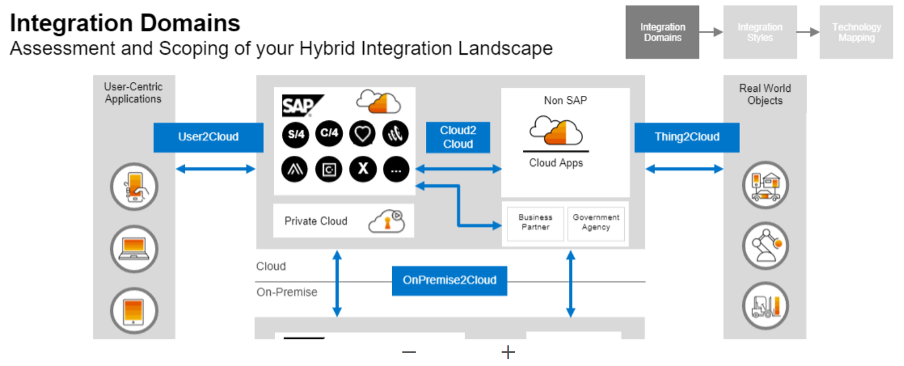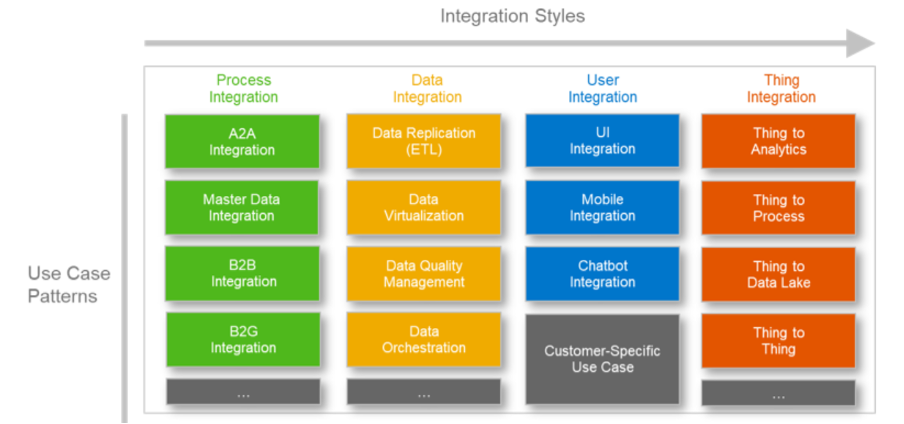Integration and Architecture Review
Home >> Solutions >> Integration and Architecture Review
APVI offers the Integration Solution Advisory Methodology, designed to assist enterprise and integration architects in formulating their integration strategy and constructing a hybrid integration platform tailored to their organizations. This methodology encompasses a versatile range of integration styles and use-case patterns, independent of specific technologies, allowing customization to suit the integration technologies pertinent to each customer's context.
Furthermore, APVI’s Integration Strategy Service employs the ISA-M framework and collaborates closely with our customers' enterprise and integration architects. In typical engagements, the following key steps are undertaken to initiate the definition of the integration strategy with SAP customers.
Evaluate Your Current Integration Environment and Technology:
During this phase, enterprise and integration architects conduct a comprehensive assessment of the existing integration landscape and available integration tools. This evaluation includes a review of integration tools or technologies slated for replacement during the transformation process. Additionally, architects prepare an interface inventory for the existing landscape if necessary.
Define the Future Application Architecture and Identify Integration Domains:
This step focuses on gaining a clear understanding of the high-level application architecture envisioned for the future. Architects work to determine the specific applications that will comprise the future landscape, considering factors such as whether these applications are public SaaS, hosted on private cloud infrastructure, legacy systems in customer data centers, or MicroServices operating on PaaS environments.
Building on the high-level application architecture, architects pinpoint critical integration points across these applications. For instance, applications like SAP S/4HANA and SAP Ariba may require bidirectional integration for procure-to-pay processes. This understanding enables enterprise and integration architects to define relevant Integration Domains for the future landscape. The diagram below illustrates a sample scenario. In this case, Cloud2Cloud, OnPremise2Cloud, B2B, and OnPremise2OnPremise are identified as the pertinent integration domains for the envisioned architecture.

Gain Insight into Future Integration Technologies and Their Capabilities:
Once the integration domains are identified, enterprise and integration architects can compile a comprehensive list of relevant integration tools specific to each domain. This involves delving into the intricacies of these tools to understand their capabilities fully. Architects assess whether these tools are optimized for high-volume data integration, user interaction, or event-based integration. If feasible, architects create a capability map outlining the functionalities of these tools.
Furthermore, it's noteworthy that an increasing number of cloud service providers now offer native integration solutions or pre-packaged integration content. For example, SAP provides pre-packaged integration content that operates on SAP Cloud Platform Integration (CPI) to streamline integration implementations. Hence, it is imperative for enterprise and integration architects to evaluate these native integration options from various vendors in comparison to utilizing existing integration tools for custom integration development.
Recognize Common Integration Usage Patterns for Each Integration Domain:
Within the framework of ISA-M, encompassing four distinct integration styles (as illustrated in the accompanying figure: process integration, data integration, user integration, and thing integration), enterprise and integration architects can pinpoint integration domains during the initial scoping phase. Subsequently, architects can identify organization-specific integration use case patterns pertinent to their clients. These architects then correlate these customer-specific use case patterns with one of the designated integration styles.

Integration Styles and Use Case Patterns for Hybrid Landscapes, Encompassing Process and Data Integration
Copyrights Reserved © 2019 - APVI Tech, UK - A Website by My Public Square
